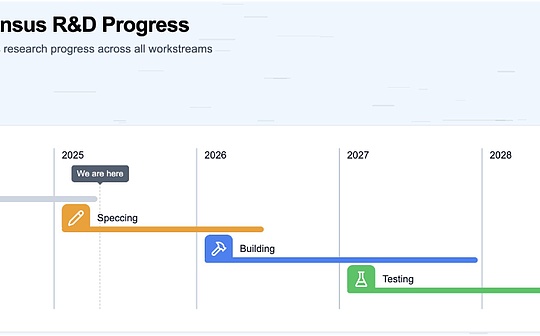
Author: KERMAN KOHLI, compiled by: Luccy, BlockBeats
Editor’s note: KERMAN KOHLI shared his insights on the success and failure of airdrops, from team attitude, user expectations, token allocation, national applicability to handling Sybil attacks, and detailed analysis of possible problems and responses in each link.Strategy.In particular, through the analysis of the EigenLayer airdrop case, important details that are easily overlooked during the airdrop design and execution are revealed.BlockBeats compiles the original text as follows:
By this time, I may have looked at more airdrop cases than most people in this field.So I began to form some generalized observations about what kind of airdrops are good and what kind of bad are.EigenLayer is a classic case of a highly-watched unsuccessful airdrop that I think we can all learn from, but there are countless other examples that we can continue to list.
Intent and expectation
Zoom in, I think first and foremost is the attitude of the team that is crucial to assessing how to successfully perform airdrops.If there is any potential motivation for greed, they will be very obvious.So, while it sounds a bit cliché, be sure to stay calm.Your users are not fools, the broader crypto community is not fools, and investors are not fools.Every action you do will be analyzed and will be tested whether your intentions are positive or negative.I write this because I have a feeling that the team thinks we are in 2021 and they can run a fraudulent strategy and no one will know what the hell you are doing.The market is much smarter, and we have seen most frauds and various forms of Ponzi schemes.
You should participate in the airdrop with the mentality of “crypto tokens are a novel and unprecedented way to drive value growth and benefit everyone.”If you can stick to this mentality as much as possible, your actions should be guided on a fairly healthy track.
The disconnect between reality and expectation may be the cause of anger in these airdrops.The less teams say, the greater the risk of disconnection between them and their users and communities, such as some common examples of teams not meeting expectations and examples of them leading to adverse outcomes.
Airdrop count
This is the first thing that should be clear to people: how many token supplies are actually allocated to airdrops.Without revealing this in advance, you are at risk of causing people to doubt how much you value their contribution.In the case of EigenLayer, they touted airdrops to heaven, revealing only a tiny 5% of the supply to the earliest supporters.While they have escaped with accumulating $15 billion in TVL, they have violated users’ trust and exposed themselves to the competition.The decline in TVL will be an interesting indicator and I will pay close attention to it.If you are unsure of the right amount, having a discussion with as many stakeholders as possible will give you a great guide.I don’t think 5% is the wrong number, just expectation exceeds reality.
National Qualifications
Which countries are eligible for airdrops and those that are not eligible.This is probably the biggest mistake EigenLayer makes, who wants to attract TVLs to people around the world, but don’t want to take legal risks associated with these countries.This is a classic case of wanting the best of both worlds, but in a way that is not fair.Either they have to draw a line and be frank to US and Asian users that they are not eligible or accept the legal risks that arise.Many teams are so scared of legal risks in cryptocurrencies that they weaken their chances of success.No matter what you do, if you succeed to a certain extent, you will eventually have to fight Gary.
Token allocation
This part is a tiny detail about how to actually distribute tokens, which is an indicator of exponential growth in challenges.Common dilemmas at this stage are:
Whales shouldn’t get all the tokens just because they invest a lot of capital
The smallest user should get some basic amount of tokens anyway
However, these two goals are directly conflicting.If you decide to give small users something anyway, then now there is a strong motivation to split your wallet to meet the minimum eligibility criteria for airdrops.This will be against whales (your biggest customer) because you encourage them to split their wallets too.I have a theory on how to solve this problem, but will be discussed at another time.At the moment, the best approach to industry standards seems to be:
Implement the hierarchical system
For “big” users, the number of allocated is slightly less linear (more liquidity, more tokens);
For “medium” users, assign a linear number;
For “small” users, a fixed number is allocated;
Use some rough standards to implement this hierarchical system
While this leaves a lot of room for improvement, it is the best the team can do right now.While there is no right way to do this, the worst way is to keep it opaque about this structure and how it is determined.
Sybil Processing
The question with token allocation schemes with hierarchical and incompletely linear is how to distinguish between small users and Sybil?Many projects have difficulty distinguishing them.Each team seems to be dealing with this in a different way.Some of these include, but are not limited to:
Establish a “self-report” program, such as LayerZero or Hop, where users whine each other, or projects get help from the community
Use on-chain clustering (only for large-scale industrial farms that launder money from Binance)
Choosing reputation-based attributes, most Sybils do not qualify
These choices are arranged as easy to difficult.Unfortunately, all of these problems are really just data segmentation issues, and not ordinary data, but big data.I will discuss this more later.
Apply vs. Direct to the wallet
This is another option to affect your airdrop.To clarify, the application mode is a mode in which users must obtain airdrops themselves, while going directly to the wallet is to make the airdrop magically eventually connect with you.The latter is very convenient, but it can also lead to instant sell-offs by more users, as those who don’t know they are eligible and don’t even follow closely will sell for funds.This argument can also be said in turn, that is, it is more difficult for non-token holders to develop cognition.
The comprehensive solution to this dilemma would be to split the airdrop into claim and direct to the wallet, but I haven’t seen this happen yet, it’s just an idea.
Unlock date/unlock schedule
If you want to choose the most important thing, it is the price of the token and the subsequent valuation.One thing the team should be aware of is the terms of liquidity received by other holders and whether locked tokens can be staked.The more favorable the clause is for insiders, the airdrop will be seen as a liquidity event and encourage others to take a short-term orientation.A few years ago, there were many tricks that the team could use, but the market then got smarter.If you need to restructuring matters with investors, go for it.Bad airdrops are never worth it.
Conclusion
Anyway, this article ends here.The purpose of my writing is to synthesize many different approaches I see in the market and to organize information for others who might consider doing airdrops.One thing that works in all cases is that there is a serious lack of tools for performing well-deserved airdrops, which I am very much looking forward to sharing, as our data stack on 0xArc enables us to do high on millions of wallets on numerous chainsLarge-scale analysis of quality.Until then, I will continue to reveal some tips on how I think this problem will be best solved.








